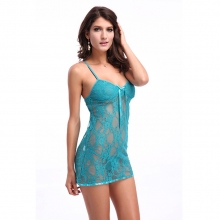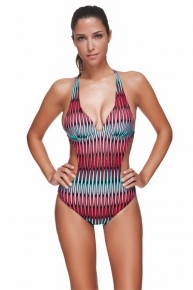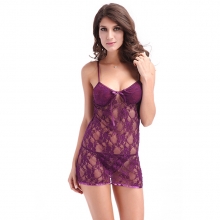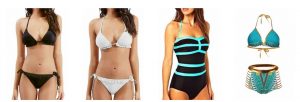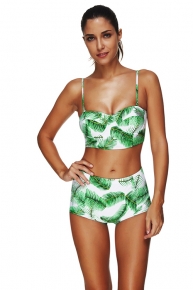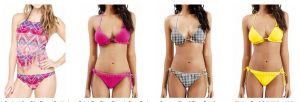Raise your hand if your bra is the first thing you want to take off when you get home. That’s probably because some 75 percent of women are wearing the wrong bra sizeand are feeling the effects—whether suffering from back pain or considering wholly unnecessary breast reduction surgery—or aresimply frustrated with limited, unattractive design options in their size. Granted, we’ve come a long way. Before 1889, when French designer Herminie Cadolle introduced the concept of shoulder straps and invented the modern bra, women had to rely on the cumbersome corset for breast support. Madame Cadolle’s soutien-gorge changed all that forever. In her day, she outfitted clients from Mata Hari to Wallis Simpson; 125 years later, her business is still going strong.
We’ve come quite a long way with what we wear — or don’t wear *wink wink* — in the bedroom. From corsets to teddies to bralettes, this is the history of women’s lingerie:
The bell-shaped hoop skirt became vogue in the early 1700s in France and was considered quite a scandal. Contemporary conservatives of the time thought they were a display of vanity and therefore sexuality – especially since it was thought the hoop skirt originated from hiding unwanted pregnancies.
Hoop skirts, however, prevailed throughout the century and towards the mid to late 1700s, became so wide and uncomfortable that they were condemned by published pamphlets in England as being a public nuisance.
In the mid- to late 1800s, women’s fashion channeled its inner Kim K and put more of an emphasis on the backside, adding rear bustles to outfits.
And the OG waist trainers were corsets, which were used to thin out and one’s shape waist. These garments would be set so tight that it wasn’t uncommon for it them to cause fainting o,r, in extreme cases, broken ribs.
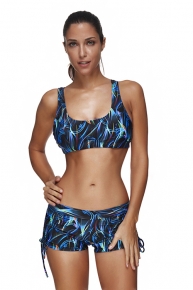
These days there’s a new movement afoot, with young, fashion-loving women getting hooked on the idea of having custom bras made or investing not just money but time learning to sew their own. Some are chasing that perfect fit; others are addressing a unique situation, whether maternity, nursing, or mastectomy. “Not many options exist in the market for high-quality bras that fit, flatter, and feel amazing,” says Ruhee Rajan, who hosts Cupperware parties for her business, Rubies Bras. She’s not talking about custom-fitted bras, “where you go into a specialty store and they alter a ready- to-wear bra for you, but a true made-to-measure bespoke bra,” she explains.
“It becomes like a girls’ night,” Rajan says of the parties she hosts at her apartment. Wine and cheese accompany her informal presentations, covering everything from what to look for when bra shopping to, most important, how to wear a bra, because, as she says, many women simply aren’t doing it right. (One tip: Stoop and scoop.) As Rajan points out, there is already a booming market for custom suits and shoes (and for good reason), so why not custom bras? Guests are invited to order her own design, what she likes to call “the Cadillac of bras, made to perfectly fit and flatter your body,
using only the best (and prettiest) fabrics so that your bra lasts you years, not months, if washed properly.”
And for those who are truly serious about DIY bra-making, well, welcome to boob camp. Women (and some men) come from all over the world to Beverly Johnson’s industrial Canadian city of Hamilton, Ontario, to take her bra-making classes, held in the back room of her Bra-Makers Supply store, past long rows of colorful stretch fabrics and other accoutrements. The classes are not for sewing novices. “You’re not learning to sew. You’re learning to sew a bra,” says Johnson, a thoughtful, witty, purple-haired 60-something who has become known as custom bra making’s “fairy boob mother.”Johnson offers two tiers of sewing instruction. Her two-day course is no frills. Literally. It’s about learning the basics. “A basic white that fits is sexier than a sexy black bra that doesn’t,” is one of Johnson’s mantras in a crash series of workshops that consists of a fitting; pattern making; and the students sewing, tweaking, and altering the finished product until it’s just right. Along with the bra students will make during the course, they take home a personalized pattern and the skills to make more. Her more intensive five-day boob camp does all that and guides students through frills and flourishes, too. Details are all important. Tweaking a custom bra is “much like how an optometrist measures each eye,” says Johnson.
As to the question of why so many women complain about fit, Johnson explains that when bras are only determined by cup size and band size it’s little wonder that few fit right: “Cup size doesn’t really tell you anything. All that cup size refers to is the amount of projection from the chest wall. If your breast sticks out four inches from your chest wall, you’re a D cup; two inches you’re a B cup, because every inch is a cup size. But if you’ve got a tiny rib cage and a bigger bust, then there can be spillage.
With a custom bra, though, “you might not have 20 in your drawer. You have three or four that really fit you well. The more people are making custom bras or altering bras to fit, the more the average woman realizes they are a thing to be appreciated and not something that’s frivolous,” says Johnson. When she hears a student say after trying on her finished product, “OMG. I don’t even feel like I’m wearing a bra,” that’s a pass with flying colors. For those who can’t make it to Ontario, she offers online tutorials at craftsy.com.
In the early aughts, Moulin Rouge was released along with the new version of “Lady Marmalade,” sung by Christina Aguilera, Lil’ Kim, Mya, and Pink. In the song’s music video and in various performances of their rendition, the women wore lingerie and corsets. Obviously they made a nod to the film, but they also used their corsets as empowering symbols of their sexuality.
Although many of us don’t wear corsets, I think it’s encouraging to know that they’ve been reclaimed by many women who feel empowered and proud of their sexuality. You might find a corset super restrictive, and feel more confident in an unlined bra, no bra, or boxer style shorts. The point is, there arguably isn’t as much pressure for women to wear certain types of underwear in order to fit in with society’s beauty ideals. And that’s a great thing.

